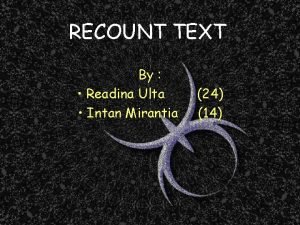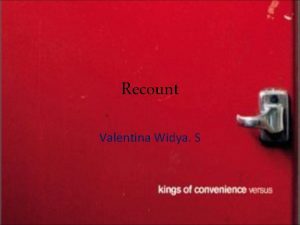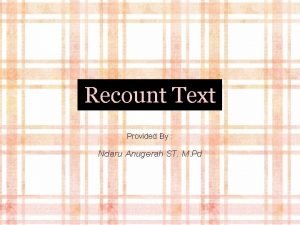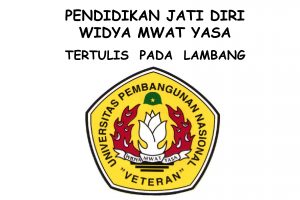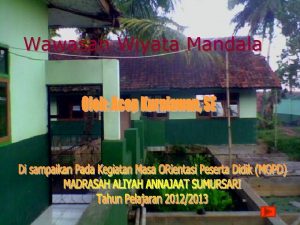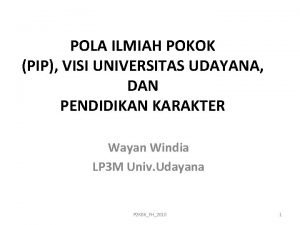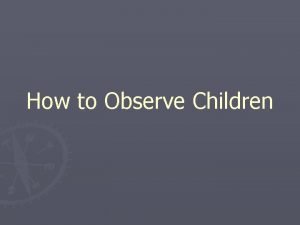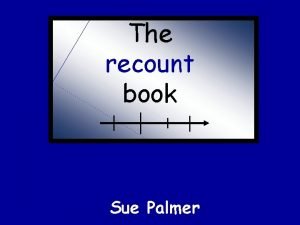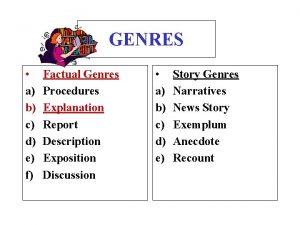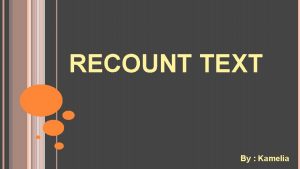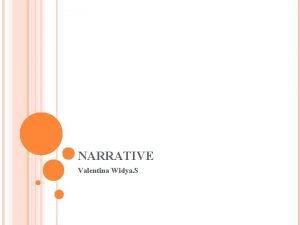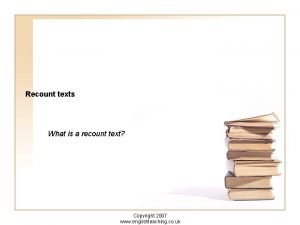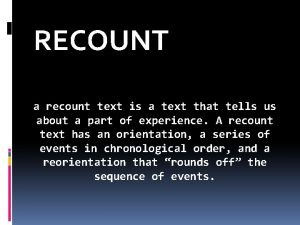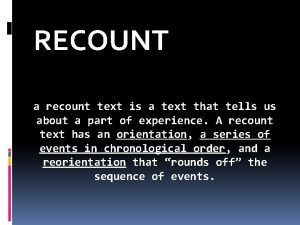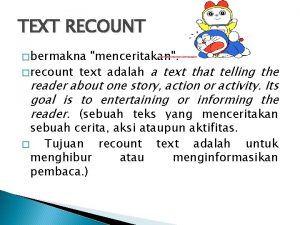Recount Valentina Widya S Social Function To record











- Slides: 11

Recount Valentina Widya. S

Social Function To record events for the purpose of informing To tell what happened

Types of Recount a. Personal Recount : retelling of an activity that the writer or speaker has been personally involved in (example: diary, anecdote) b. Factual Recount : recording the particular of an incident (example: report of social experiment, police report, news report, historical account) c. Imaginative Recount : taking of an imaginary role and giving details of events (example: a day in life of a Roman slave)

Generic Structure Orientation : giving the reader the background information needed to understand the text Record (Sequence) of Events : a record of events in a chronological sequence Reorientation : closure of events (Coda)* : comment on events

Linguistic Features GENERAL →focus on specific participants →Past tense →Verbs of action →Use of temporal connectives to indicate sequence of events →Circumstances of time and place

Linguistic Features PERSONAL RECOUNT - Use of 1 st person pronouns (I, We) - Personal responses to the events can be included, particularly at the end - Details are often chosen to add interest or humour

Linguistic Features FACTUAL RECOUNT - Use of 3 rd person pronouns (he, she, it) - Details are usually selected to help the reader reconstruct the activity or incident accurately - Sometimes the ending describes the outcome of the activity (e. g. in a science experiment) - Mention of personal feelings is probably not appropiate.

FACTUAL RECOUNT - Details of time, place, and manner may need to be precisely stated 9 e. g. at 2. 30 pm, in the corner of the street) - Descriptive details may also be required to provide precise information (e. g. a man with red shirt, brown shoes and long hair) - The passive voice may be used - It may be appropriate to include explanations and justifications

Linguistic Features IMAGINATIVE RECOUNT - Usually written in the 1 st person. - It may be appropriate to include personal reaction

Modelling • EXAMPLE_RECOUNT. doc

Joint Construction - Historical, Biographical, and Autobiographical Recounts When did it happen? What happened? Where did it happen? Why did it happen? Written from which point of view? Character description (use emotive language, exaggeration, stereotypes, inferential clues) • Technical Language • Visual Text • • •
